I am currently trying to find some potential memory leaks in my angular application and found something which should regard to the hereMap, that I am using in one component. This is the situation:
I have an Angular 12 SPA with two components:
ComponentA - completely empty angular component - just for routing away from component B
ComponentB - the component that is using the hereMap.
When switching routes from Component A to B to A I would expect the garbage collector to remove most of the allocated memory after going back to A after a certain amount of time or when clicking "Collect garbage" in DevTools.
Here is what drives me crazy:
Every time when I go to the route with ComponentB, it seems like mapsjs-core.js adds a new TileManager that stays in memory forever and holds an enormous amount of objects and Arrays (3.5k Arrays and 10k Objects each time) which adds up to like 3-5mb memory each time.
Those objects include textures, meshes, shields, etc in multiple instances of TileManagers (TileManager_0, TileManager_1, TileManager_2 after 3 times of creating a new instance of ComponentB).
After ngOnDestroy of ComponentB got called, ComponentB is no longer part of the memory, so disposing the map seems to work as expected.
Here is how the components look like:
import { Component, OnInit } from '@angular/core';
@Component({
selector: 'app-component-a',
templateUrl: './component-a.component.html',
styleUrls: ['./component-a.component.styl']
})
export class ComponentAComponent implements OnInit {
constructor() { }
ngOnInit(): void {
}
}import { Component, OnInit } from '@angular/core';
@Component({
selector: 'app-component-b',
templateUrl: './component-b.component.html',
styleUrls: ['./component-b.component.styl']
})
export class ComponentBComponent implements OnInit, AfterViewInit, OnDestroy {
@ViewChild('map') public mapElement: ElementRef;
private map: H.Map;
private platform: H.service.Platform;
constructor() { }
ngOnInit(): void {
this.platform = new H.service.Platform({
apikey: myKey
});
}
ngAfterViewInit() {
const defaultLayers = this.platform.createDefaultLayers();
// Set min and max zoom level
defaultLayers.vector.normal.map.setMax(16);
defaultLayers.vector.normal.map.setMin(2);
// Initialize the map
this.map = new H.Map(
this.mapElement.nativeElement,
defaultLayers.vector.normal.map,
{
zoom: ZoomLevels.ZOOM_MIN_SINGLE_MAP
}
);
}
public ngOnDestroy(): void {
this.map.dispose();
}
}